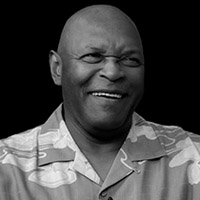Venture Capitalists Prefer Large Established Markets

Venture Capitalists Prefer Large Established Markets
By Robert Ochtel
1/22/2009
Many entrepreneurs only focus on bleeding-edge, burgeoning markets when developing their technology, product or service offering. This is done for various reasons including:
The perception that burgeoning markets have limited competition,
The ability to establish an early foot-hold to increase the value of their company, and
The reality of the difficulty in developing a differentiated, long-term competitive advantage in large established markets.
This article outlines why this market approach is generally too risky for many venture capitalists and then provides five reasons why venture capitalists prefer large established markets over bleeding-edge, burgeoning markets.
Emerging Bleeding-Edge Burgeoning Markets
Often in order to differentiate themselves from large, established competitors, smaller companies or start-ups believe that they should address emerging markets with bleeding-edge technology. Generally speaking, it is true that the larger competitors will not jump into a new, emerging market segment until it is deemed that the market has enough volume to support the required investment. In addition, these same large companies are more conservative in their investment philosophy and can afford to wait as they have the necessary resources and marketing presence to jump in quickly and create their own position in the emerging market. On the other hand, smaller companies or start-ups believe that if they can create a foothold in an emerging market, it will allow these same start-up companies to secure a strong position and for them to gain market share supporting a significant exit strategy for their investors by either going public (less likely) or getting acquired by a larger, more established competitor.
More often than not, this bleeding-edge, burgeoning market entry strategy comes with a large amount of risk. The most important risk factor here is that the underlying, emerging market that supports this bleeding-edge technology does not develop in a predictable, near-term time frame. In this situation, the technology pundits often claim that their target market or market segment will take off within the next year, providing their company with a substantial return on investment in a very short period of time. This optimistic view of the world, usually does not consider the time it takes to roll-out new technology infrastructure or to establish this same new technology with the customer base. More often than not, this one-year time frame turns out to be five to seven years. This makes it virtually impossible for a small, venture-funded company to finance the multiple generations of product development that are required before their bleeding-edge target market supports the shipment of significant enough volume to make their business model self-sustaining. In many cases, this same small high-technology, start-up-company has secured a tremendous amount of funding (e.g., $50M to $100M) and cannot secure additional funding from third-party investors. In this situation, the amount of funding secured significantly outweighs any financial value of the company or its technology, product, or service offering, requiring its investors to sell it to the first large company that will pay pennies on the dollar just to get out of the investment.
This scenario is not unusual. In fact, it has been my experience that within the high-technology wireless markets, this has happened to many start-up companies in the digital cellular, Bluetooth, the wireless LAN (WiFi) and WiMAX markets. For all of these markets, the pundits had projected substantial immediate growth in short periods of time, only to have the markets develop over much longer periods of time, causing many of the early, venture-funded start-up companies that targeted these markets to go out of business or to be sold to larger competitors for an insignificant valuation for the company and their investors.
This is not to imply that there are not many cases where venture-funded, start-up companies developing bleeding-edge technology for an emerging market did not secure a significant return for their investors. In the high-technology boom of the late 1990s, many large semiconductor companies were purchasing small start-ups to hedge their bets on some of the emerging wireless markets. At the time, many of these small companies were being purchased at valuations between $200M to $400M. These unheard of valuations, although good for the start-up companies, rarely made significant returns for the acquiring company, which often shut down these operations within one to two years after their purchase.
Large Established Markets With Strong Growth
A much stronger strategy is for start-up and emerging companies with unique and disruptive technologies to go after large, established markets with strong growth. This is the one of the untold secrets for receiving funding from the venture capital community. The venture capitalists always look for companies, as previous defined, with disruptive technology product or service offerings, looking to address large and established markets with strong growth potential. By addressing large, established markets with strong growth, one has eliminated the substantial risk that exists when there is the need for the underlying market to develop in order to support your business model. This generally is an undue amount of risk that many investors are unwilling to take to ensure their return on investment. In addition large established markets have five favorable market characteristics as described below.
Reason #1: The Market is Large
The market is large. By virtue of its large size, this makes the market very attractive to investors and new start-up companies seeking to establish themselves in the market. The market, due to its size, is big enough to support one or more new competitors. Therefore, the opportunity exists to establish your company in the market by securing enough market share to support your business model projections. In addition, due to the inherent size of the large market, it does not require your company to secure an unrealistic market share to meet its business goals. This makes the large market an excellent investment opportunity and significantly reduces any risk that is out of control of your company, the size of the market.
Reason #2: The Market is Established
The market is established. This also reduces the overall risk to your company looking to enter the market with your technology, product, or service offering. By being established, there is a defined history to the market, the competitors, and their technology, product, or service offerings. This makes the underlying dynamics of competition within the market well understood, again eliminating any unknowns and unforeseen risk that may be hovering just under the surface of smaller, less established markets. By addressing a market that is already established, your company can predict many of the risk factors that it will need to address to be successful in the market.
Reason #3: The Market Has Strong Projected Growth
A market with strong projected growth is desirable for two reasons. First, by having strong growth, your company can be assured over the long term of the opportunity to increase its return on investment. Strong growth also allows for the possibility of new market sub-segments to develop, creating additional growth opportunities for your company. Secondly, strong growth makes a market very dynamic. That is, there are new competitors trying to enter the market, and established players trying to retain their positions. This provides for more opportunity for your company to develop a compelling technology, product, or service offering that can be used to secure significant market share. The pure dynamics of a growing market requires established competitors and new competitors alike to constantly monitor the market for new opportunities, creating a highly competitive environment.
Reason #4: The Market Has a Known Customer Base
By being large and established, the market has a known customer base. Therefore, your company with its technology, product, or service offering can look at the established history of the market and determine the needs of your target customer base. In addition, with the established customer base there is always a strategic, opportunistic customer need that is not being addressed, providing for an opportunity to substantiate your company as a new competitor in the market. Generally speaking, established customers are always looking for new ways to differentiate their technology, product, or service offerings, providing themselves with a leg up on their competition. Also, with an established customer base, by studying the market leaders, and their specific customers, market positions, and product offerings, it is easy to determine what is required to make a company successful in the market.
Reason #5: The Market Demands New Customers
Large, established markets with strong growth also attract new potential customers for your technology, product, or service offering. By virtue of its size, growth, and the underlying dynamics, new customers will always be looking to establish themselves in the target market. These new customers may be established competitors or new competitors, but one must always assume that there exists opportunity for new customers for your technology, product, or services offering. Many times these new potential customers exist under the radar. They may be strong competitors in complementary markets, new venture-funded start-ups, or large corporations looking to established themselves in non-related markets. The issue here is that, for large, established markets with strong growth, there always exist new potential customers for your technology, product, or service offering. The key is to do your research and due diligence to identify these new potential customers.
Since all venture capitalists are by their nature risk adverse, it pays for entrepreneurs to target markets that are large with strong growth. Generally speaking bleeding-edge, burgeoning markets end up being a disappointment — both for the entrepreneur and their investors, resulting in much lower returns for the venture capitalists. The five reasons outlined here provide the entrepreneur with the necessary insight that will allow them to be discriminating when choosing their target markets of interest.
The information provided in this article has been used by the author to raise over $50M in venture capital from Sequoia Capital, Oak Investment Partners, Brentwood Associates, AT&T Ventures, and Intel Corporation and was taken from “Business Planning, Business Plan, and Venture Funding – A Definitive Reference Guide for Start-up Companies” by Robert Ochtel (232 pages, 76 illustrations). The book is available from the publisher, Carlsbad Publishing, at http://www.carlsbadpublishing.com
We hope you found this article about “Venture Capitalists Prefer Large Established Markets” helpful. If you have questions or need expert tax or family office advice that’s refreshingly objective (we never sell investments), please contact us or visit our Family office page or our website at www.GROCO.com. Unfortunately, we no longer give advice to other tax professionals gratis.
To receive our free newsletter, contact us here.
Subscribe our YouTube Channel for more updates.

Alan Olsen, is the Host of the American Dreams Show and the Managing Partner of GROCO.com. GROCO is a premier family office and tax advisory firm located in the San Francisco Bay area serving clients all over the world.
Alan L. Olsen, CPA, Wikipedia Bio

GROCO.com is a proud sponsor of The American Dreams Show.

The American Dreams show was the brainchild of Alan Olsen, CPA, MBA. It was originally created to fill a specific need; often inexperienced entrepreneurs lacked basic information about raising capital and how to successfully start a business.
Alan sincerely wanted to respond to the many requests from aspiring entrepreneurs asking for the information and introductions they needed. But he had to find a way to help in which his venture capital clients and friends would not mind.
The American Dreams show became the solution, first as a radio show and now with YouTube videos as well. Always respectful of interview guest’s time, he’s able to give access to individuals information and inspiration previously inaccessible to the first-time entrepreneurs who need it most.
They can listen to venture capitalists and successful business people explain first-hand, how they got to where they are, how to start a company, how to overcome challenges, how they see the future evolving, opportunities, work-life balance and so much more..
American Dreams discusses many topics from some of the world’s most successful individuals about their secrets to life’s success. Topics from guest have included:
Creating purpose in life / Building a foundation for their life / Solving problems / Finding fulfillment through philanthropy and service / Becoming self-reliant / Enhancing effective leadership / Balancing family and work…

MyPaths.com (Also sponsored by GROCO) provides free access to content and world-class entrepreneurs, influencers and thought leaders’ personal success stories. To help you find your path in life to true, sustainable success & happiness. It’s mission statement:
In an increasingly complex and difficult world, we hope to help you find your personal path in life and build a strong foundation by learning how others found success and happiness. True and sustainable success and happiness are different for each one of us but possible, often despite significant challenges.
Our mission at MyPaths.com is to provide resources and firsthand accounts of how others found their paths in life, so you can do the same.
Where does Happiness Come From? | Richard Del Monte
About Richard Del Monte Richard is a CERTIFIED FINANCIAL PLANNER™, Certified Wealth Consultant, and nationally recognized expert on Families and Wealth. Richard has been featured on FOX Business News, The Wall Street Journal, New York Times, Private Opportunities Club, Private Wealth Magazine, Trust & Estates, and Family Wealth Report. A sought after speaker, he…
The Future of Health Care | McKay Thomas
About McKay Thomas Since he was in high school, McKay Thomas has been an entrepreneur. Some of his companies have been, pooltables.com, baby.com and ainda.com Currently he is the co-founder and CEO of First Opinion, a company which matches a personal doctor to to their clients that they can contact 24 hours a day.…
Attention Triggers | Ben Parr
About Ben Parr Ben Parr is an award-winning journalist, author, entrepreneur, investor and expert on attention. Through his unique experience as a leading technology writer, venture capitalist and prolific public speaker, Parr has coached dozens of young startups and Fortune 500 corporations on how to get attention for their products. He was named one…
Beyond Baseball | Vida Blue
About Vida Blue Six time All Star, 3 time world series champion, MVP and Cy Young Award winner Vida Blue is quite a Baseball legend. Listen to his first hand experiences of what it’s like to play professional baseball and what’s the legend doing today? Interview Transcript: Alan Welcome back. I’m here today…




